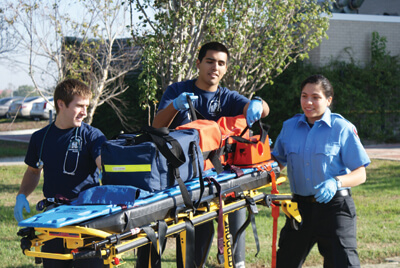The heart-stopping sound is unmistakable and familiar. An ambulance screams its presence as it draws nearer and the first response is to wonder if someone is having a heart attack or stroke or if there’s been a vehicular or pedestrian accident in the area. But what about those who work to save lives in thousands of daily emergency situations such as these? The public may not immediately wonder what those individuals must do to be prepared every day. However the uniforms those first responders wear may be just as important in making sure someone survives an accident or medical event as the EMT’s medical and lifesaving training.
Nowadays it is nearly impossible to characterize exactly what the particular needs will be for a first responder. There are so many variables depending on their agency type, the specific event and threat level, climate, and countless other factors that there is clearly no single answer.
But in general, uniforms are worn more often than civilian clothing, are cleaned more often and are subject to greater extremes. The need for more durable fabrics that will outperform standard fabrics is evident. They must stand up to the elements and the rigor of the job to be performed.
In addition to some design changes over civilian garments, the most major change seems to be in the fabric of the EMT uniform, according to Steve Robinson, Liberty Uniform owner. “Today’s fabric can be any combination of moisture management, UPF ultraviolet sun protection, moisture repellants, stretch fabrics, etc. Many add either fluorescent colors for daytime visibility or reflectivity for nighttime visibility. [The American National Standards Institute] continuously issues upgraded specifications to meet today’s demands. All will lead to a uniform that is both more protective and more comfortable than those of years past.”
Liberty Uniform manufactures an EMT trouser featuring multiple specialty cargo pockets, a stretch waistband and reinforcement throughout for overall durability. “EMTs seem to favor standard polyester/cotton poplin shirts, over 100 percent polyester,” Robinson says. “We have often added reflective stripes to these trousers. There are many manufacturers who make specialty outerwear to meet the needs of EMTs. The variations seen in styles are actually quite substantial.”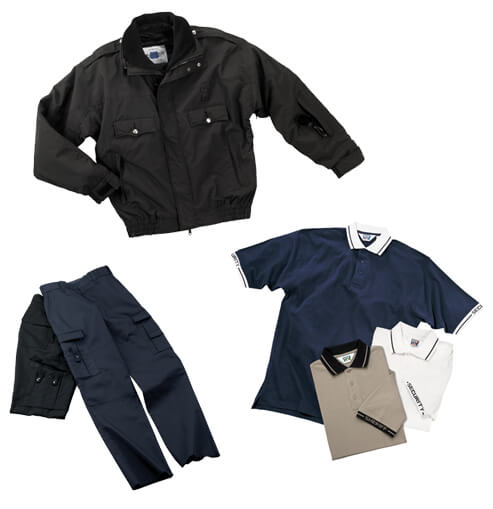
Some of the changes are stemming from departmental requirements as well. As departments try out new gear, they are adapting the mandatory standards to reflect what is most effective, efficient and comfortable. For example, Nate Robinson with Rock Hill City Fire Department wears a rubber-soled shoe with a high top. Most shoes that are used by firemen have some kind of feature to allow quick access in placing the shoe on the foot and removing it, according to Robinson.
He says, “Some firefighters still wear the steel-toed shoes, but the requirement to wear such shoes has been relaxed recently so it is not mandatory for everyday use. Now the shoes worn during firefighting operations do still contain the steel toes. They are also waterproof, while our daily-wear shoes are water resistant.”
Robinson continues, “Our daily-wear clothes such as pants are also water resistant. Other than that we wear T-shirts, sweatshirts or anything that keeps us warm outdoors in cold weather. In the emergency mode, of course, we wear fire-retardant material called Nomex, one type of material used in making fire turnout gear. This gives the firefighter some measure of extra protection from direct fire at least temporarily; if you are in the fire for too long though, it will eventually catch fire.”
This material does absorb water but is somewhat water resistant too. There are other types of fire-resistance turnout gear as well. “In earlier times, firemen wore rubberized ‘trench coat-type’ coats and tall rubber boats that came up nearly to the mid-thigh. The gear was really heavy, cumbersome and not nearly as protective as the near gear that is out now,” says Robinson.
Though the new gear is lighter and offers considerably more protection, it is possible to get something of a false sense of security, according to Robinson. The firefighter may not realize he’s in as much trouble as he is because the material actually protects the fireman from heat.
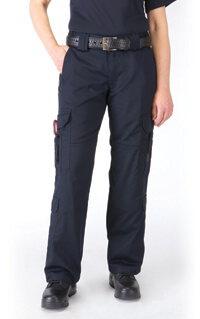 “The new gear these days is so much more effective than it used to be. It is more resistant to heat, more resistant to fire and actually lighter when you are wearing it on your back. It doesn’t absorb as much water so you don’t get as heavy as you used to when it gets wet,” he says. “The inner lining on the fire gear is more breathable and allows perspiration to wick into the material itself. We go to the annual clothing expo and see that something is always being introduced; the technology is constantly changing and continually improves. Cairns supply us with safety headgear as do the companies Lyons and Bullard.”
“The new gear these days is so much more effective than it used to be. It is more resistant to heat, more resistant to fire and actually lighter when you are wearing it on your back. It doesn’t absorb as much water so you don’t get as heavy as you used to when it gets wet,” he says. “The inner lining on the fire gear is more breathable and allows perspiration to wick into the material itself. We go to the annual clothing expo and see that something is always being introduced; the technology is constantly changing and continually improves. Cairns supply us with safety headgear as do the companies Lyons and Bullard.”
Gloves have become more ergonomical lately for handling equipment and doing things that require more dexterity. Some are actually made with curved fingers. But Robinson sees even more chance for innovation. “I wouldn’t mind if they made these even better; that’s been a real marked improvement in fire gear.”
The majority of Liberty Uniform’s business is public safety. This includes police, fire, sheriff, corrections and EMT – the latter often under the fire protection service. The major product line for first responders is footwear, shirts, pants and outerwear. “What they are looking for out of these products is functionality and performance,” Robinson says.
Steve Zalkin of Alamar Uniforms hears similar expectations from his customers. But he says the demands can vary depending on the specific department of the first responder. Zalkin says, “EMTs come from all different types of backgrounds. Omaha EMT system is part of the tax-funded fire department. Kansas City Missouri used to contract out EMT services to a company called MedAct, but they have since brought those under the city’s responsibilities. Then you have volunteers. The smaller communities are all volunteers so they could be doing their eight-to-five job and get called out on a response call. It comes in many different forms and fashions.”
For this reason, uniforms can vary widely in terms of their components. They may be something taking a great deal of preparation to put on, or they could simply be a reflective vest placed over street clothes to avoid being hit in the middle of the road during an emergency call. A paid professional first responder is interested in good footwear, a pair of trousers able to hold equipment – knives, scissors, stethoscopes and other items they use on the job – a shirt giving them immediate identification on a scene and outerwear that is warm enough for severe weather conditions, according to Zalkin.
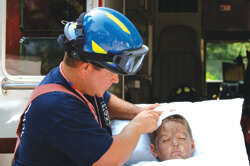 “This outerwear must make them visible even on cloudy days in the middle of the street. They don’t want to get hit by a vehicle themselves. That’s where the reflectivity comes into play. People are very ignorant about moving over into another lane and out of the way when they are driving down the road and see these first responders,” Zalkin says. “For the EMTs, there are different standards depending on what the agency desires from their people, including blood-borne pathogen protection for example. They want their people to be wearing footwear and any outerwear that protects them from blood, including gloves. For some units, such as those associated with a fire protection outfit, individuals may be required to wear fire protection clothing as first responders.”
“This outerwear must make them visible even on cloudy days in the middle of the street. They don’t want to get hit by a vehicle themselves. That’s where the reflectivity comes into play. People are very ignorant about moving over into another lane and out of the way when they are driving down the road and see these first responders,” Zalkin says. “For the EMTs, there are different standards depending on what the agency desires from their people, including blood-borne pathogen protection for example. They want their people to be wearing footwear and any outerwear that protects them from blood, including gloves. For some units, such as those associated with a fire protection outfit, individuals may be required to wear fire protection clothing as first responders.”
First responders are even going in with SWAT teams on such events as the breakup of meth labs. Police may be busting into houses that contain guns and labs that can explode. The EMTs may have to be prepared to handle any incidents that happen to that team as well.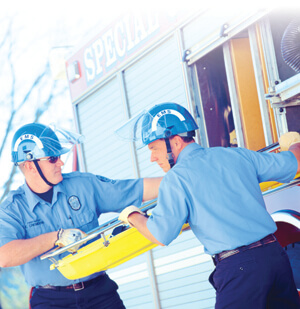
Zalkin says, “Our cues here at Alamar are coming from the end users and the manufacturers who are developing these products for the end users. There have been a lot of changes over the past 20 years. I’ve had the chief of a fire department tell me that if you are concerned about the polyester that he’s wearing underneath his bunker gear melting onto the firefighter’s skin, he’s got a whole lot more of a problem than that. The bunker gear now protects firemen to extremely high-degree temperatures.”
There are different statutes around the country requiring different degrees of such things as reflectivity. The ANSI standard plays a big role in determining what is acceptable and worn. In addition to that, the National Fire Protection Association’s standards discuss blood-borne pathogen protection as well as temperature and chemical protection. EMTs come in many different varieties depending upon the municipalities, the area, the situation and the economics – paid, volunteers, part of an independent company or part of a fire department. The challenge comes in offering the range of products that can address the variety of hazards, body types, environments and budgets.
Zalkin says, “From our standpoint, administration of the program is the biggest thing that we have to look at. The uniform industry is going to continue to make products for them to do their job whatever the case may be. I believe there are more volunteer EMTs in the country than paid individuals in that line of work. It is still the same products, however, that the individuals need to perform their important work of saving lives.”




